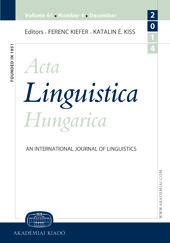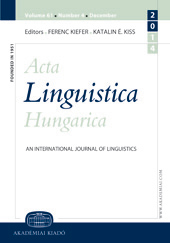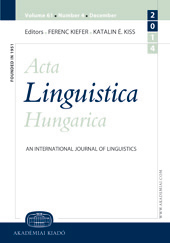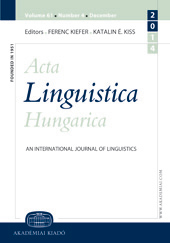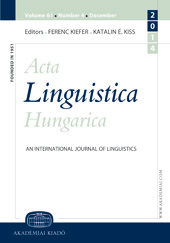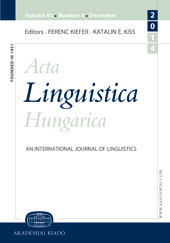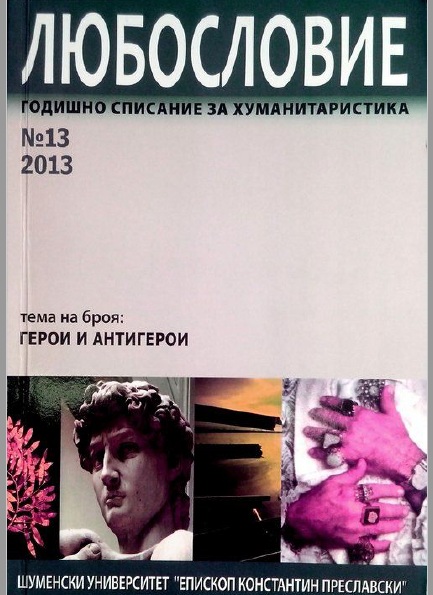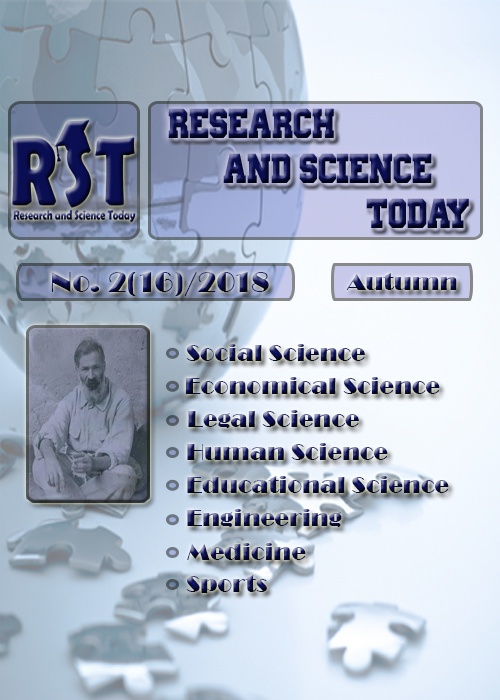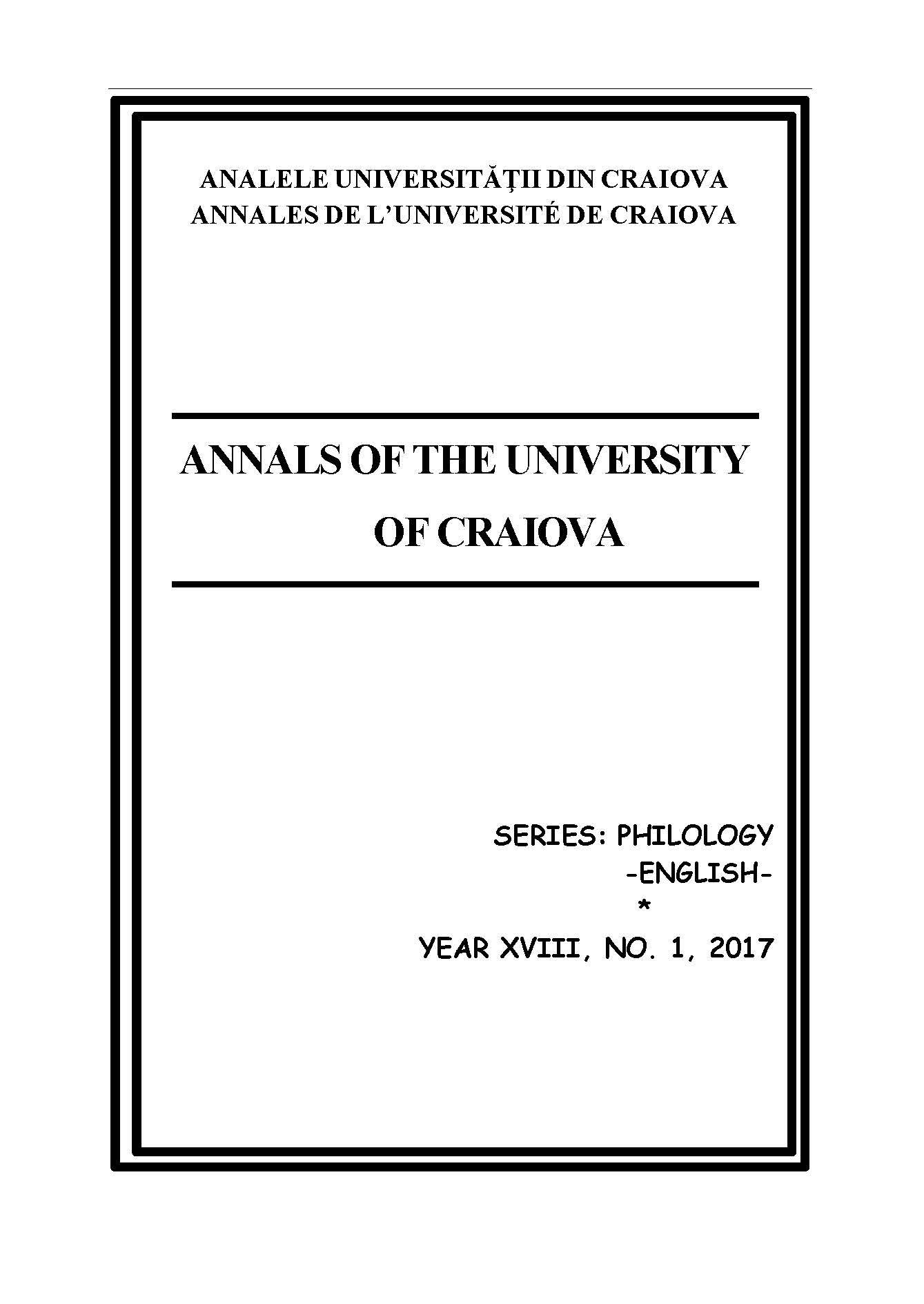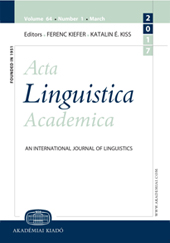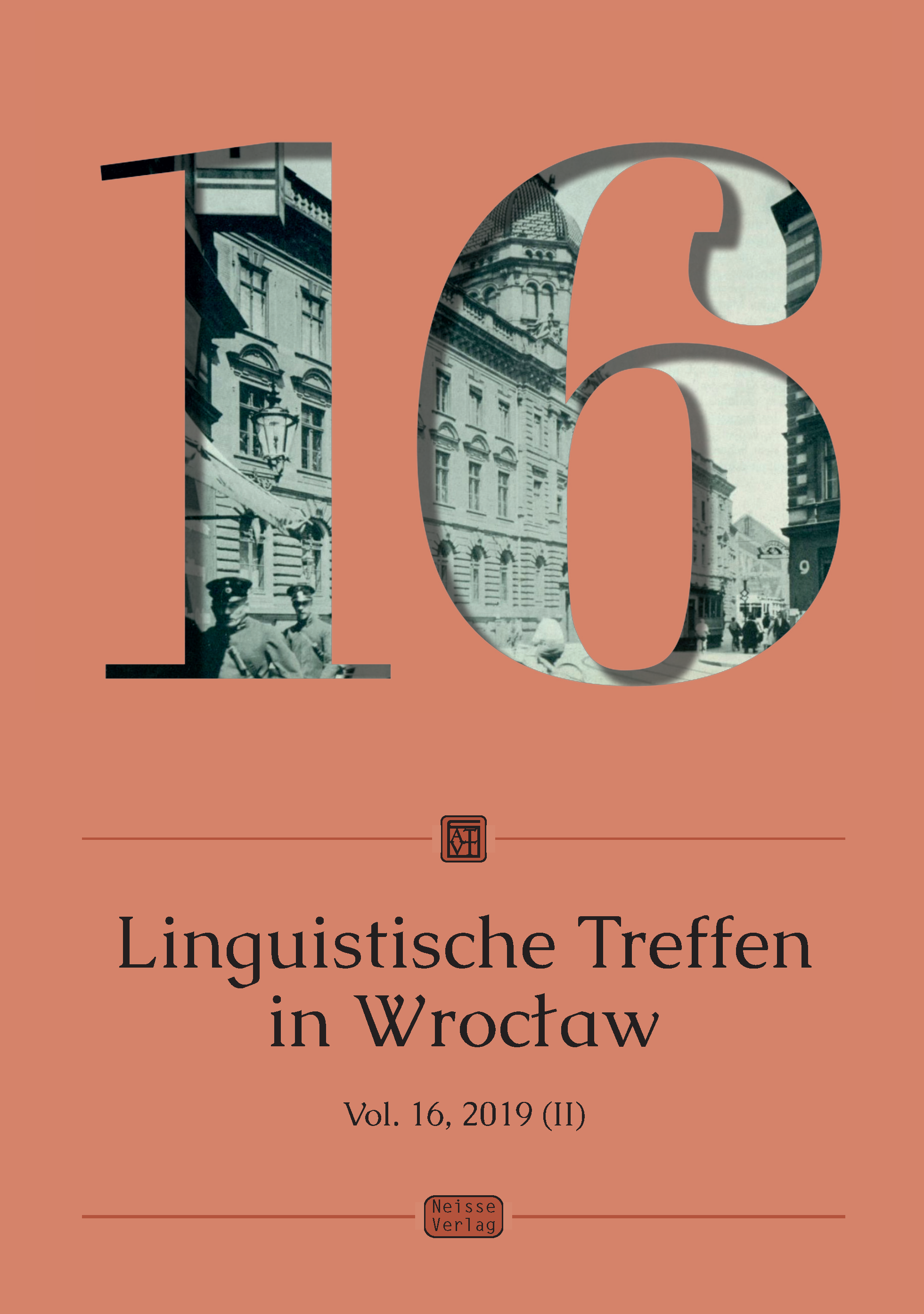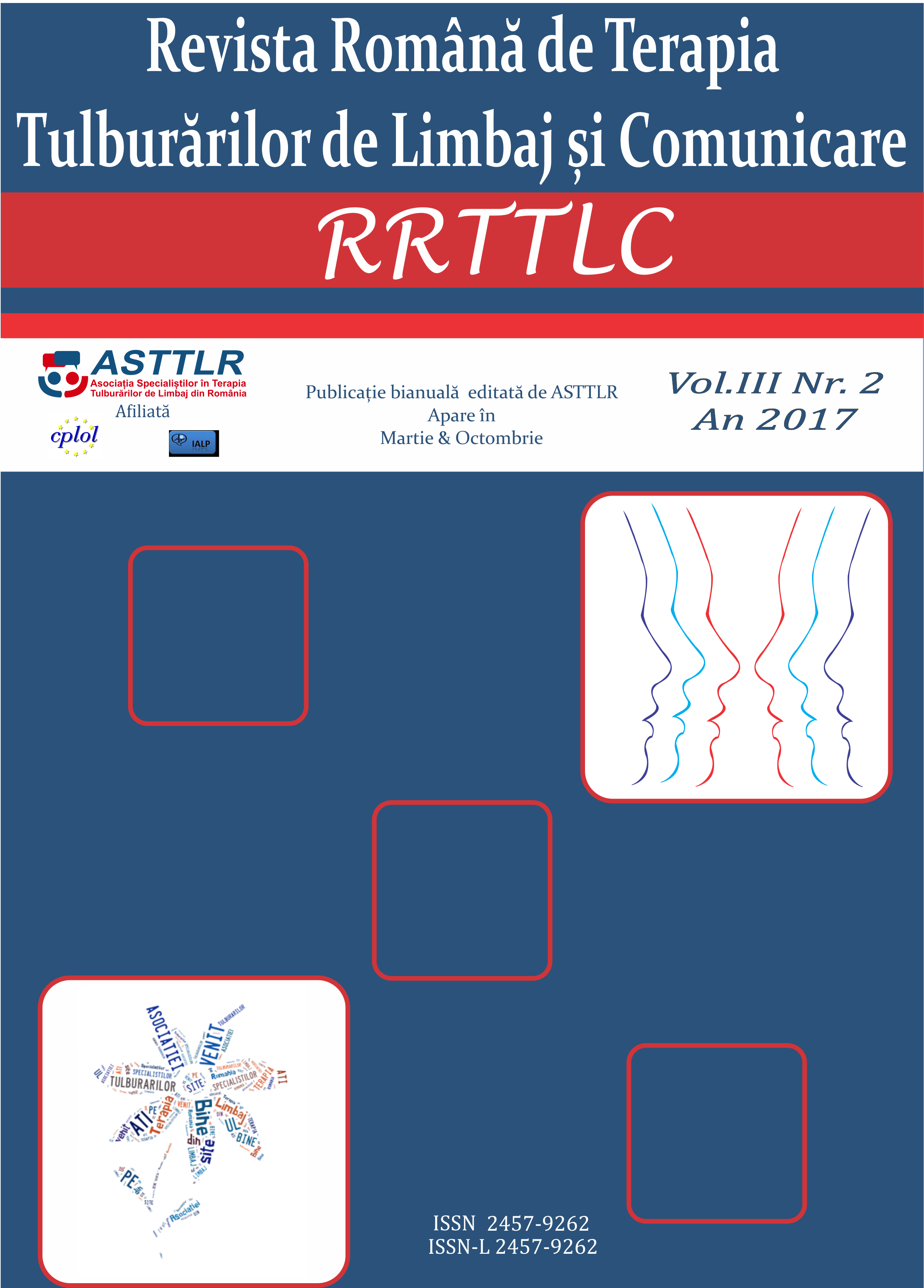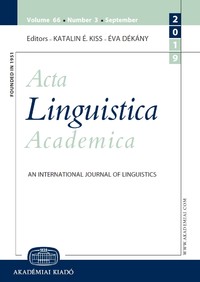Segmental Identity and the Issue of Complex Segments
This paper examines the phonological entities called labiovelar stops in Classical Latin. The status of these entities involves the question whether they are segments (i.e., labiovelar stops) or clusters (i.e., sequences of a stop and a glide). The arguments for either position are discussed in detail and the literature is critically reviewed. The types of evidence that are taken into account are facts of frequency, phonetics, phonotactics, alternations and a specific assimilation process, and certain diachronic points are also considered. The conclusion is that the balance tilts slightly, but not definitively, towards the cluster interpretation.
More...
